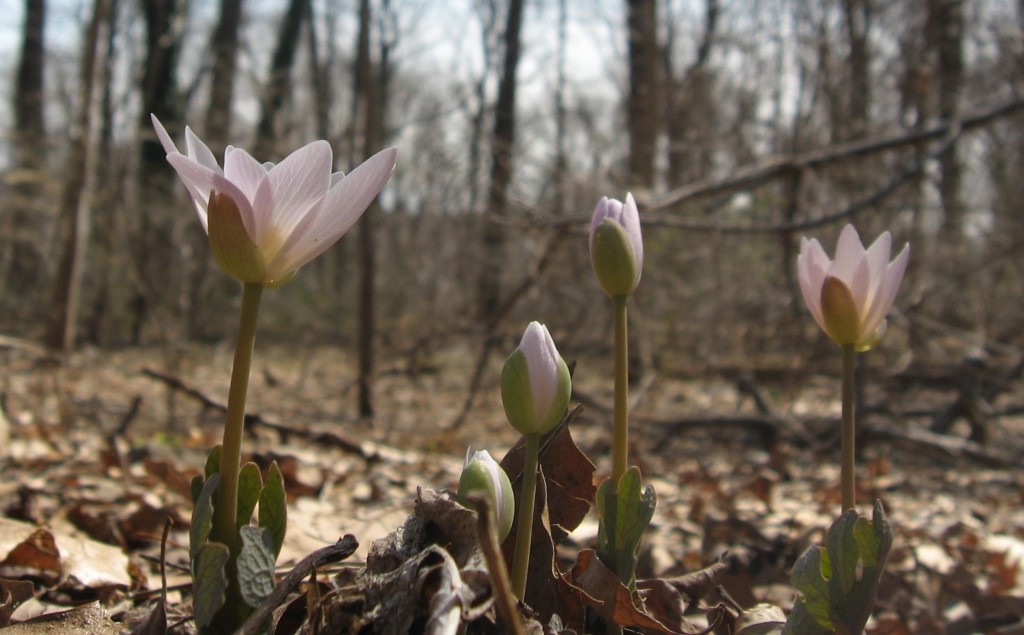
We waited all morning for the flowers to bloom. It was a cold morning, but the sun was out.  We could relate to their trepidation. We waited and waited and the flowers remained closed. Our reputation was on the line. We anticipated a Sunday the 20th bloom and published this assertion.  We were correct – the flowers bloomed at 1:30. We sat and watched them open. There is something to be said about patience. For the first time  in our experience, the flowers have a pinkish hue.

There is so much variation in the species. This specimen has close to double the amount of petals.
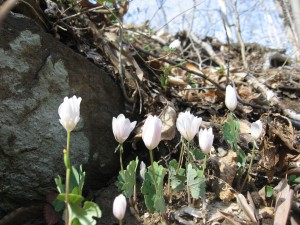
The Staff of the Sanguine Root have been wanting to see something special for several years now and have always been at the wrong time.  In the summer of 2009 we found a whole hillside in Pennypack Park, near the Pennypack Park Environmental Center full of Bloodroot plants. We came back in the first week of April 2010, to hopefully see this one hillside of Bloodroot in bloom, only to find them fully leafed out in the seed production stage. No problem for us, we love to see the plants in all stages of  life.  We were at that point very satisfied with the beautiful blooming  Trout Lilies we had viewed in the area.
However, The Sanguine Root is persistent and does not easily give up. We decided to come extra early this time and catch those blooming Bloodroot flowers. Our roll of the dice was right on, and we were greeted with a breathtaking display of Sanguinaria Canadensis flowers. Â The whole hillside in bloom this afternoon!
For the record: On March 20th, 2011, at 3:00 pm, the hillside of the  middle trail, just North of the Pennypack Park Environmental  Center is awash in the most beautiful inflorescence of Bloodroot we have ever seen.

From the Pennypack Environmental Center parking lot,  a trail leads to the center, where you will encounter a fantastic museum and interactive  exhibition featuring a live turtle and a host of educational displays about the woodland area of Pennypack Park. A knowledgable and friendly Philadelphia Parks and Recreation staff will answer any questions and enthusiastically guide you through the exhibition. We were welcomed to Pennypack Park in the most grand manner!  We can only dream  of welcoming any newcomer to Morris Park in the same gesture.
- Sanguinaria canadensis, blooming Bloodroot in Pennypack Park, march 20th, 2011

The path leading north from the environmental center will go down a hill. Take the right-hand most path. You will pass a disturbing invasion of Privet and Amur Honeysuckle . They are trying to eradicate these invasives, but it is not an easy task. Next, just keep going. There will be alot of the invasive exotic Ranuculus ficaria, Lesser Celandine. Â This plant has shiny and small (a half inch) leaves and yellow flowers. Â In two or three weeks we anticipate a discussion of this menacing invasive. Â After a good walk you will see on the right a hillside that is not covered with lesser Celandine and is covered with the native wildflower Bloodroot. A beautiful white flower that has the ability to capture the imagination.
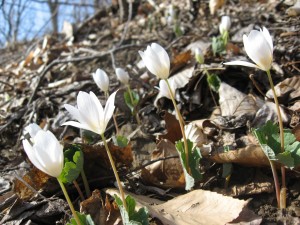
Today, March 20, 2011, a Sunday, we wanted  to see  and we found native wildlfllowers blooming.
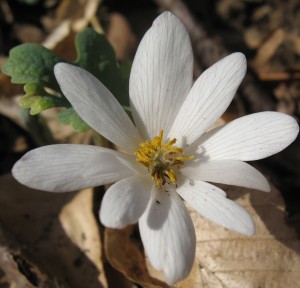
- Isabelle Dijols,The hillside of Sanguinaria canadensis, Pennypackpark, Philadelphia

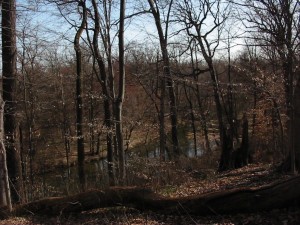
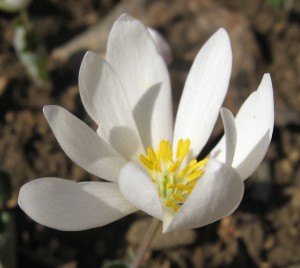
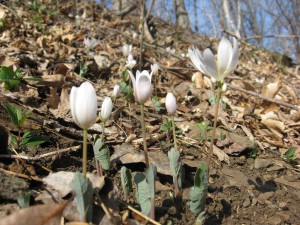
- Early spring, a hillside in the woods – look and you will see.
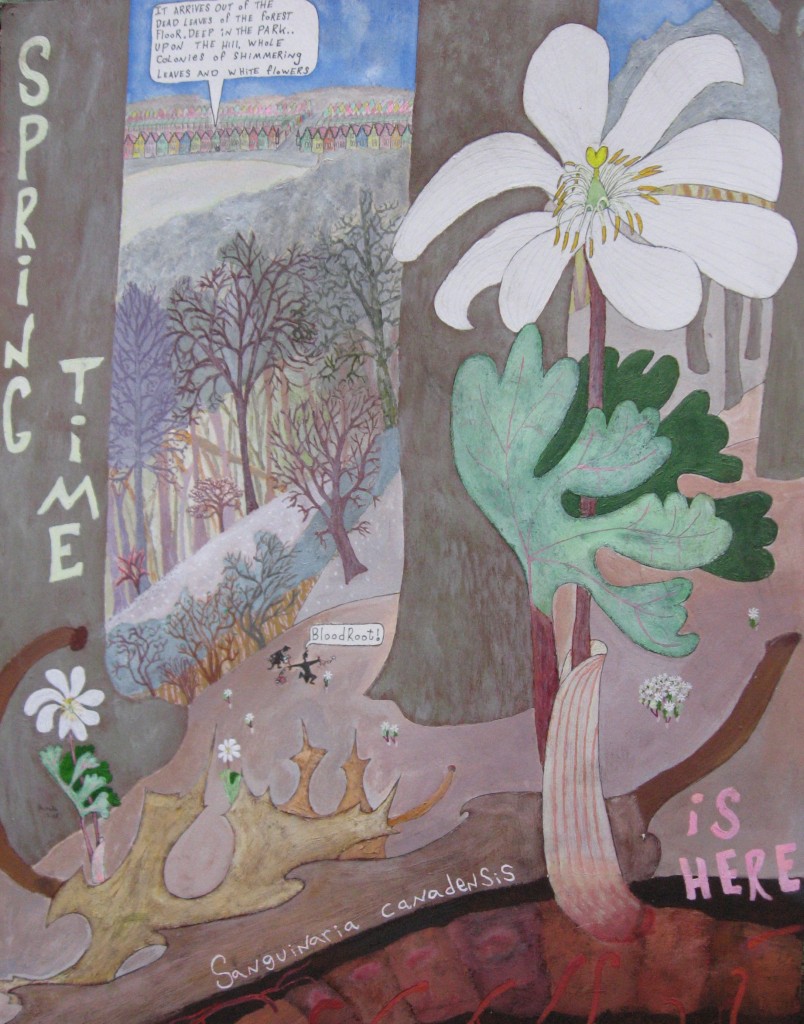
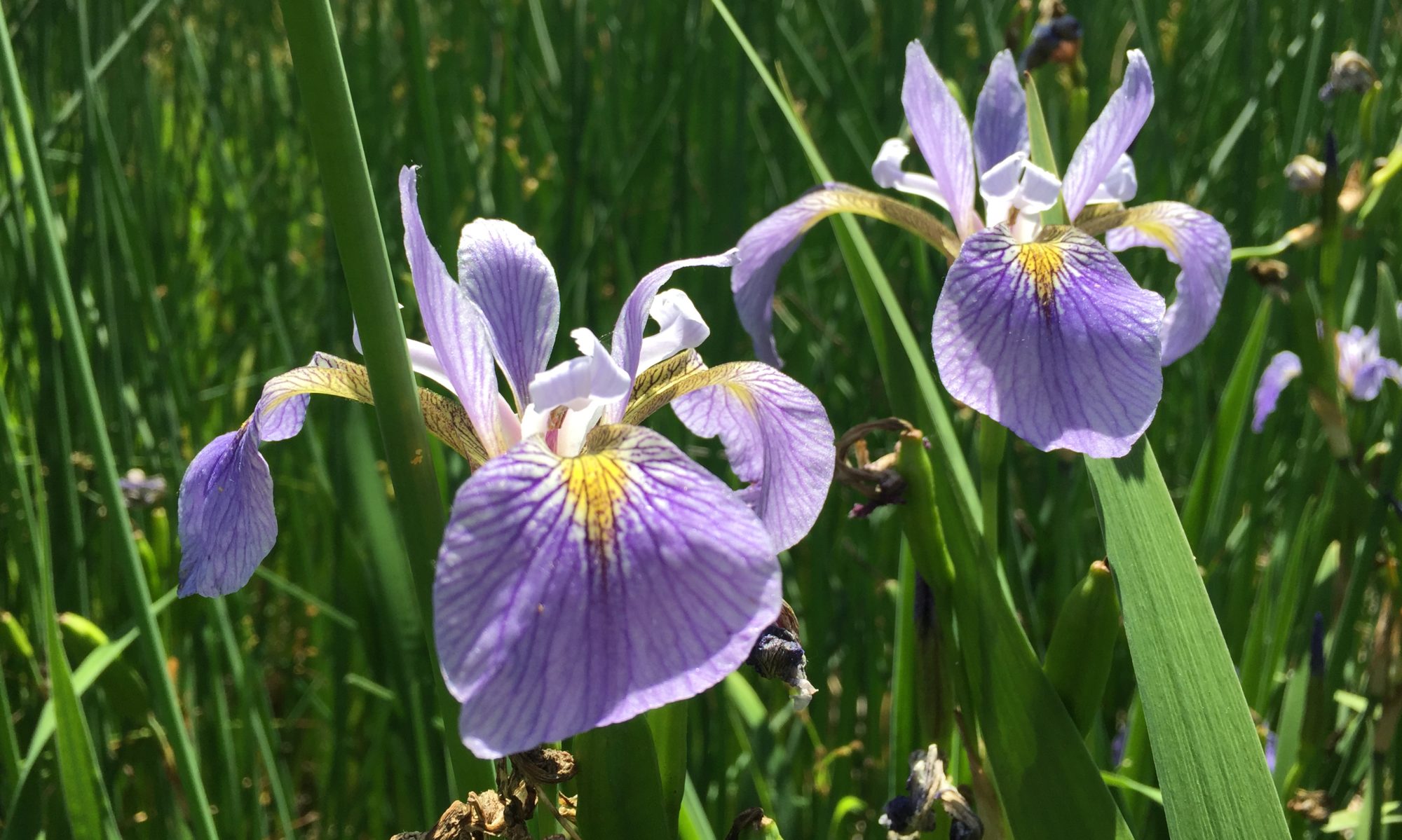
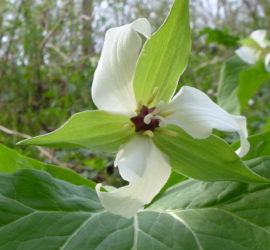

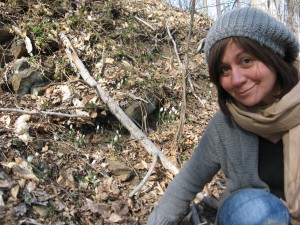
I like the painting a lot. It’ a complex but balanced composition.
We think they are sensitive to soil temperatures and daylight length. The ones blooming this past sunday are located in an area where there is a hole in the forest canopy due to invasive vegetation that has pulled down the young trees. Other early-blooming bloodroot populations in Morris Park occur on a steep south facing hillside that gets sun all day, due to a degraded and thinned urban forest canopy. Populations that are growing under slightly shadier conditions will be blooming in the next few days and weeks. Aside from environmental triggers, we also suspect a genetic component to the blooming behavior. In any given population of Bloodroot, there is a local provenance in its genetic make-up. These populations have been exchanging pollen for thousands of years, much like the Bloodroot we found in Marianna Florida (some southern populations are noted for their unique ‘dwarfed’ stature, we did notice they appeared smaller) and they have unique genetic characteristics. It sure is neat that here in Philly, the Bloodroot blooms on the first day of spring. I’m sure it will bloom later in a New England location, such as Maine or Vermont .
Nice, crisp photos! How do the bloodroot flowers know how to show up on the first day of Spring?